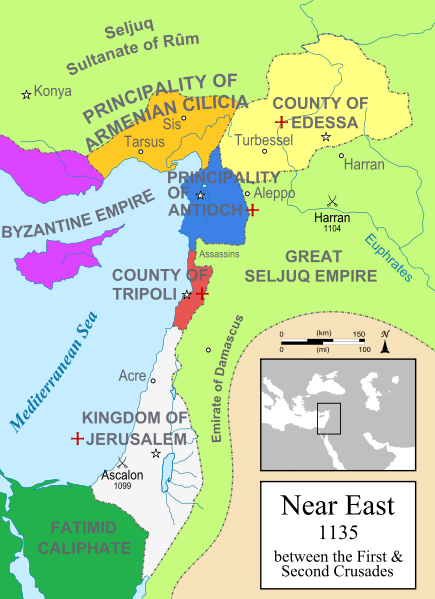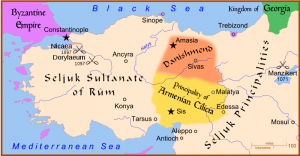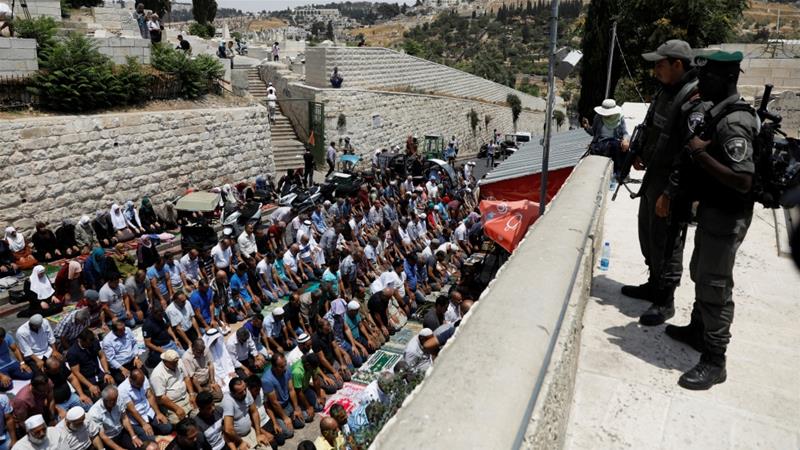THE CRUSADES (PART 2) : OCCUPATION
In Part 1 of this series, we analyzed the causes for the Crusade invasion and the capture of the third holiest site in Islam, Jerusalem. The series on the Crusades continues here with the occupation of the Muslim lands.
On Friday, August 9th, 1099, it was the 29th day of Ramadan. Suddenly, Abu Saad al-Harawi, a respectable qadi (Muslim judge), burst into the main masjid of Baghdad and began eating publicly in front of everyone, even though it was Ramadan. He had just traveled 3 weeks from Damascus to bring news of the loss of Jerusalem and rouse the Muslims into action. He figured nothing would get more attention than eating during the day in Ramadan. The people of Baghdad began to weep for the lost holy city. Al-Harawi pled his case before the Caliph of Islam, a young man called al-Mustazhir. The Caliph promised to put together a committee to explore a possible retaliation. It ended up being just a promise.
The Muslims of the day were in no position to stand against the strong Crusader army. Petty Turkish emirs fought regular wars against each other, leaving cities and the countryside in ruin. The Caliph himself actually had no real power at all, he was nothing more than a puppet in the hands of Turkish generals. The pan-Islamic unity that was seen in the early centuries of Islam was nothing more than an old legend at this point.
Meanwhile, the Crusaders were strong, unified, and determined, qualities that the Muslims of the day lacked. They established four Crusader kingdoms along the coast of the Mediterranean, and ruled them as they would European principalities in France or Germany. Although Muslims were ethnically cleansed from most of the conquered cities such as Jerusalem, Antioch, and Beirut, most Arab (Muslim, Christian, and Eastern Christian) rural peasants remained in the conquered territories. In the Kingdom of Jerusalem itself, over 300,000 Arabs lived.
A unique aspect of this of this occupation was the slow assimilation of the Crusaders into Muslim culture. In the centuries before the Crusades, the Muslims had been at the forefront of scientific, philosophical, technological, and cultural innovation. While Europe was struggling through the Dark Ages of ignorance, the Muslim world had a quality of life unheard of in Europe. As the Arab chronicler Usamah Ibn Munqidh, a contemporary of the Crusades, wrote: “All those who were well-informed about the Franks saw them as beasts superior in courage and fighting zeal but in nothing else, just as animals are superior in strength and aggression.”
Slowly, Muslim practices began to permeate into the culture of the occupying forces. While the Muslims learned nothing from the Crusaders besides European ideas of castle-building, the Crusaders began to imitate the actions of their Muslim subjects. Muslim medicine, language, agriculture, engineering, and math all made their way West through the Crusades. Even the iconic game of chess, which was originally developed in Persia, was introduced to Europe through this conflict.
However, the Crusader invasion into the Muslim world did not create anything near a Utopian multi-religious society (that actually existed at this time in Muslim Spain). Muslim civilians were in constant fear of massacre by the foreign Europeans. For example, according to Crusader sources, in November 1098, the Crusaders massacred every civilian in the Syrian city of Ma’arra, and then proceeded to eat the bodies. Tales of such brutality at the hands of the Franks slowly brought the Muslim world out of its slumber. But in the early 1100s, victory still seemed far away. It was not until the leadership of Imad al-Din Zengi in the 1130s that the tide began to turn.
To be continued in Part 3 of the Crusades series on Lost Islamic History.
Sources:
Hodgson, M. (1961). The Venture of Islam . (Vol. 2). Chicago: University of Chicago Press.
Crusades in The New Catholic Encyclopedia, New York: McGraw-Hill Book Company, 1966, Vol. IV
Maalouf, A. (1984). The Crusades Through Arab Eyes. New York: Schocken.
(Published 2017/07/19 at 12:28 am)



















Comments